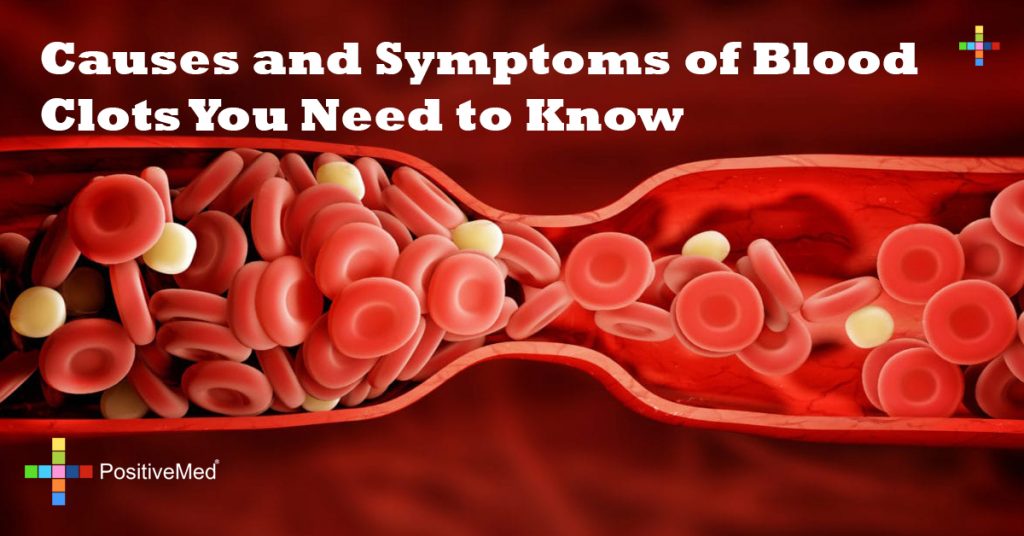
According to the National Blood Clot Alliance, approximately one in three people suffering from a blood clot dies even though it is a treatable condition. In the United States, blood clots develop in over 900,000 people yearly.
Blood clots form inside arteries and veins due to the efforts by the body to repair a blood vessel. A clot is a gelled mass comprised of fibrin and blood platelets. A clot can lead to significant problems if it inappropriately develops inside the blood vessel. Blood flow decreases whenever clots form, posing severe dangers.
Failure to recognize the symptoms of blood clots is among the most common concerns, especially since it often leads to late detection. Additionally, the factors that contribute to the development of blood clots are generally unknown or misunderstood.
Causes
According to the National Blood Clot Alliance and MedicineNet, a variety of health conditions, issues, and lifestyle choices can cause blood clots including but not limited to:
• Hormone replacement therapies containing estrogen
• Heart conditions like heart rhythm disturbance and atrial fibrillation
• Use of birth control techniques containing estrogen including the patch, pill, or ring
• Pregnancies, extending to about six weeks after delivery
• Extended immobilization including sitting still or with your legs crossed for long periods
• Major surgeries, particularly immobilizing orthopedic procedures that involve the placement of casts and splints. The highest risk factors include abdomen, pelvis, knee, and hip surgeries
• Severe muscle injury and broken bone
• Obesity
• Blood clot disorders such as Factor V Leiden
• Cancerous infections and their treatment plans
READ ALSO: Like To Sit With Your Legs Crossed? After Reading THIS, You Won’t Do It Again!
Symptoms
Blood clots usually form in blood vessels commonly referred to as deep vein thrombosis. They can, however, break off and travel to the lungs. This condition has various symptoms, some of which it is important to have knowledge about such as:
RELATED ARTICLE: 9 Natural Ways To Reduce Risk of Blood Clots
Deep vein thrombosis (DVT): Deep vein thrombosis occurs once blood clots develop in any of your body’s deep veins such as those in the legs and arms. The affected area usually swells up and becomes tender. Patients often describe the pain as similar to cramps, a charley horse, or muscle soreness.
The formation of DVT distorts the skin color around the affected area almost always and turns it to either a reddish or bluish hue. Affected areas also feel warm to the touch. Because you might need immediate medical attention, contacting your doctor as soon as you notice any of these symptoms is of uttermost importance.
Pulmonary embolism (PE): Sharp stabbing chest pains that worsen with deep breaths, sudden shortness of breath, rapid heart rates, and unexplained coughs occasionally featuring bloody mucus are some of the most prevalent symptoms of PE. Go to an emergency room or contact emergency service providers immediately you notice any of the symptoms mentioned above.
Detection
Doctors usually use ultrasound to pinpoint the location of a blood clot. MRI scans can also be employed for the detection of clots, particularly if a patient keeps experiencing symptoms but the ultrasound does not show the location of a clot. A D-dimer test checks the blood for indications that the process of clotting has begun, which means it can also be effectively employed for detection.
Treatment
Ingestion of foods considered to be natural blood thinners might help in the treatment of an existing blood clot. However, it is important to note that such measures are more useful for prevention. Grapes, pomegranates, ginger, and garlic are arguably the most effective natural blood thinners. These foods comprise of salicylates, which are usually quite adept at counteracting and minimizing the coagulating effects of vitamin K within our bodies.
Prevention
Paying careful attention to the risk factors is the most reliable mode of blood clot prevention. According to MedicineNet, risk factors include smoking, overweight issues, high cholesterol, vascular diseases, hypertension, and diabetes. Knowledge of personal risk factors such as genetics and having the ability to recognize both the signs and symptoms related to blood clots also plays a significant role in its prevention.
Ensuring you are mobile, especially after extended periods of immobility also significantly contributes towards the prevention of blood clots. If you are confined or immobile due to sickness or you recently underwent surgery, it is important that you consult your doctor about your blood clot prevention options.
Conclusion
It is incredibly important always to remember never to ingest natural blood thinners alongside any medication formulated for the same purpose. Such combinations often thin the blood too much, causing adverse complications. It is also important to catch any blood clot early on because it can lead to major damages, especially if it breaks off in the vein and travels to the lungs. However, maintaining a healthy diet plan significantly contributes to the prevention of clots.






